Looking for some low histamine recipes to add to your Thanksgiving dinner table? I’ve got you covered. But first, what the heck is histamine anyway, and why is it such a problem?
What is Histamine?
You’re likely familiar with the word histamine, because chances are you’ve taken antihistamine medications for allergies. Antihistamines work by blocking the effects of histamine, a compound produced in the body and contained in certain foods.
You may assume that histamine is a bad thing because of the association between negative symptoms that occur because of it. However, histamine is actually essential for proper functioning of your immune system, digestion, and the brain.
Important Functions of Histamine
Histamine functions as a neurotransmitter, helping to deliver messages from the body to the brain. It increases stomach acid to help you break down food, helps the immune system to ward off foreign invaders, keeps us awake, regulates our hormones, and assists in muscle contraction. Histamine is a key mediator for allergic reactions.
Histamine is definitely not the enemy, despite our likely negative association with the word.
When Histamine Becomes a Problem
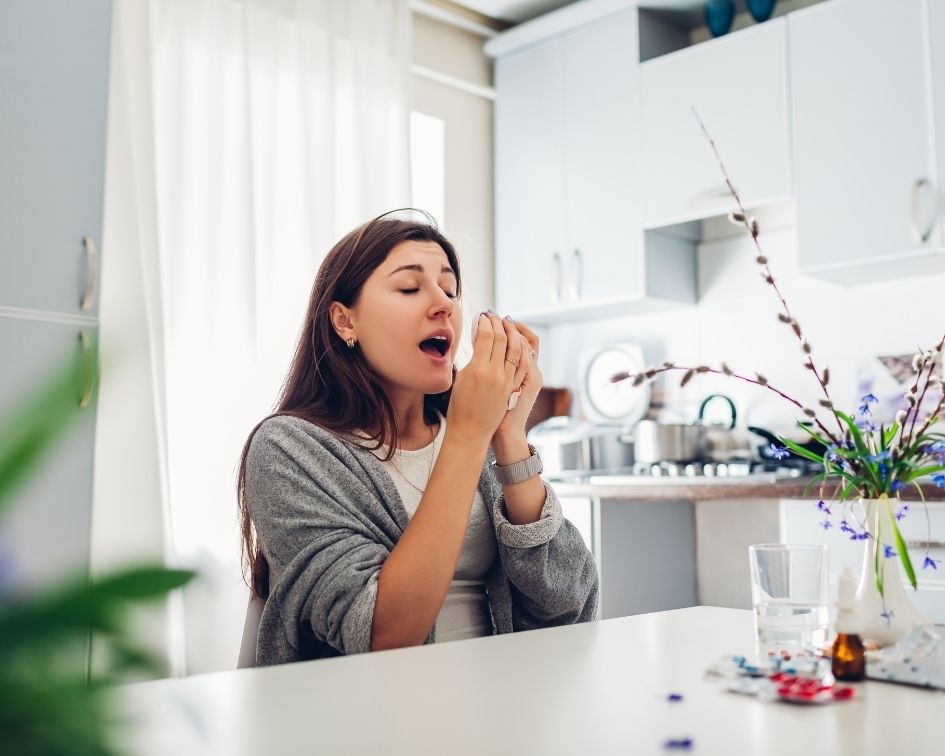
While histamine plays several vital roles in the body, too much of it can become problematic for many people, leading to an intolerance. We depend on the enzymes DAO (Diamine Oxidase), the main enzyme in the digestive tract, to break down histamine that we ingest from food. When DAO levels are insufficient, the body is unable to break down histamine, and as a result histamine can build up rapidly in the body.
Symptoms happen when histamine levels surpass the body’s threshold level. These symptoms widely vary, and include symptoms that we associate with allergies, such as:
- Hives
- Nasal congestion/runny nose
- Flushing
- Sneezing
- Itchy eyes & skin
- Headaches
- Asthma attacks
- Flushing
But symptoms may also include symptoms not necessarily associated with allergies as well, such as:
- Diarrhea
- Nausea
- Vertigo/dizziness
- Brain fog (some might call it ADD)
- Low or high blood pressure
- Fatigue
- Anxiety
- Skin issues such as acne, eczema, rosacea or psoriasis
- Tachycardia
- Irregular menstrual cycles
The analogy I use for when a person has a histamine intolerance is to imagine a bucket that’s been placed under a leaky roof. The bucket protects the floor around it until the water level overflows the bucket and problems ensue. If you don’t keep emptying the bucket before it overflows, the floor gets damaged.
The Problem With Antihistamines

Carrying around too much histamine is problematic, and leads to symptoms as described above. You might assume that taking antihistamines is the perfect solution to that. Think again.
Antihistamines merely block histamine receptors in our cells, preventing (or suppressing) symptoms. They do not break down histamine. This means that when the effects of the medication wear off, the histamine is still free-flowing in your bloodstream, waiting to wreak havoc on you.
This is why you have to keep taking the anti-histamines in order to prevent the symptoms. And when the histamine intolerance becomes worse over time as the histamine continues to build up in the body, it also explains why your symptoms become worse and the medications stop working.
Just like the bucket used to catch the drips from the leaky roof that I mentioned earlier, the use of antihistamine is only stopping problems temporarily. I always say, instead of just putting a bucket under the drips, why not fix the leaky roof?
That’s exactly what I teach you how to do in my online self-guided program, The Histamine Solution Academy. I teach you why your body is so over-reactive to histamine and guide you step-by-step how to stop the cycle of reactions and misery. So instead of covering up the symptoms with medications, I teach you how to stop the problems that are causing them and put you in the driver’s seat of your health FOR LIFE!
You’ll also have access to functional testing so that you can identify hidden causative factors. And when you implement my method consistently, and you are patient with the process you will improve your symptoms. I’ve seen my clients improve & reverse their allergies, anxiety & mood swings, digestive issues, skin troubles like hives, rashes, acne & eczema, headaches, clear brain fog. I’ve even had clients get pregnant after being told by their doctors that they would never conceive. Learn more about the Histamine Solution Academy.
Foods & Beverages to Avoid
Certain foods and beverages contain high levels of histamine and/or are inflammatory in nature. I won’t go into the full list here, but the following are a few foods/beverages that may be on the Thanksgiving table that should be avoided if you have a histamine intolerance.
- Alcohol

Yes, this includes wine. I’m really sorry to be the bearer of bad news, but if you have a histamine intolerance, alcohol is not your friend. Alcohol is fermented, and fermented foods and beverages are high in histamine.
Aside from being high in histamine, wine contains tannins and sulfites, compounds which are problematic for a lot of people, especially those with allergies. This can lead to headaches, flushing, itching, congestion or a runny nose, and wheezing. I realize it can leave you feeling left out, particularly on occasions like Thanksgiving, when all the other grown-ups are enjoying a glass of wine or other alcohol with dinner. But, if you want to enjoy yourself and not have to make a beeline for the Benadryl, it’s best to avoid alcohol.
You know what you could do instead? Mix together some sparkling mineral water (Topo Chico is my personal favorite) and anti-inflammatory pomegranate juice in a wine glass. You’ll feel like you’re having a glass of wine right along with everyone else, but without the awful side-effects.
- Relishes or other vinegar-containing foods

As mentioned above, fermented foods (including vinegars) are high in histamine, and should be avoided.
- Dried/Aged Meats

Smoked and aged meats are high in histamine because during the aging process, histamine is produced by bacteria on the meat.
4. Aged Cheese

Aged cheeses are high in histamine, as the process of cheese-making requires fermentation
5. Rolls, Breads, Pies with gluten-containing crusts

Gluten should be strictly avoided because it is a major trigger for inflammation in the body and leaky gut. I go into the role that inflammation and a damaged, leaky gut play in allergies and histamine intolerance in my online self-guided program, The Histamine Solution Academy. In this self-guided program, I teach you step-by-step how to become your own best self-healer…for life!
Low Histamine Thanksgiving Recipes
Below are some of my favorite low histamine Thanksgiving recipes that you can indulge on without skyrocketing your histamine levels. All the recipes are Paleo, which means grain, gluten, dairy and soy-free. These recipes, along with the turkey, will round out your entire Thanksgiving meal. They will leave you feeling satisfied and nourished without a cascade of allergy symptoms for dessert.
My approach is not to eliminate high histamine foods altogether. Rather, I prefer to balance high histamine foods with lots of anti-inflammatory and low-histamine foods instead.
Cauliflower Stuffing
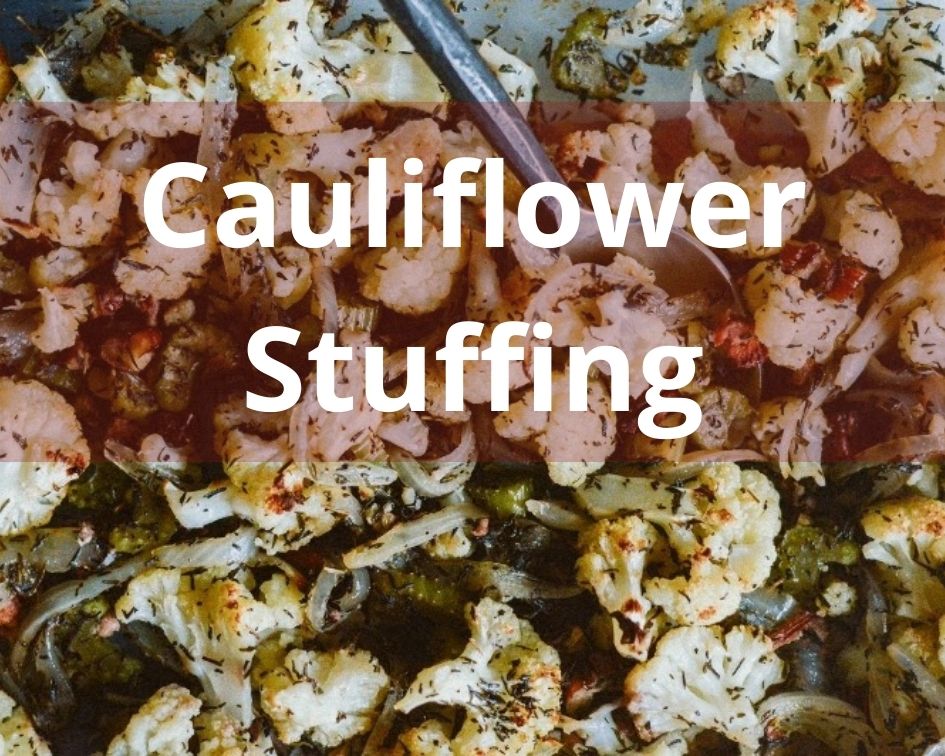
This recipe uses traditional spices and herbs (anti-inflammatory!) to give this “stuffing” the same feel and flavor of traditional stuffing, without the inflammatory and high-histamine effects of bread-based stuffing.
Prep time: 10 minutes
Total time: 40 minutes
INGREDIENTS
- 1 large cauliflower head, chopped into small florets
- 1 large yellow onion, sliced
- ¼ cup thinly chopped celery
- 1 cup finely crumbled grass-fed ground beef or Italian sausage
- 2 garlic cloves, chopped
- ¼ cup olive oil
- ¼ cup crushed pecans
- 1 Tbsp maple syrup (optional)
- ½ tsp dried thyme
- ¼ tsp ground dried rosemary
- ½ tsp ground sage
- ¼ tsp black pepper
- 2 Tbsp chopped fresh parsley
INSTRUCTIONS
- Preheat oven to 450ºF. Line a baking sheet with parchment paper.
- In a large bowl, combine all ingredients minus the fresh parsley and pecans, and toss until olive oil, maple syrup, and herbs are evenly distributed.
- Spread the stuffing on the baking sheet in a single layer (you may need more than one).
- Roast for roughly 15 minutes.
- Remove and stir in fresh parsley and pecans, then roast for another 10-15 minutes until cauliflower edges are golden and pecans are brown.
3-Ingredient Cranberry Sauce
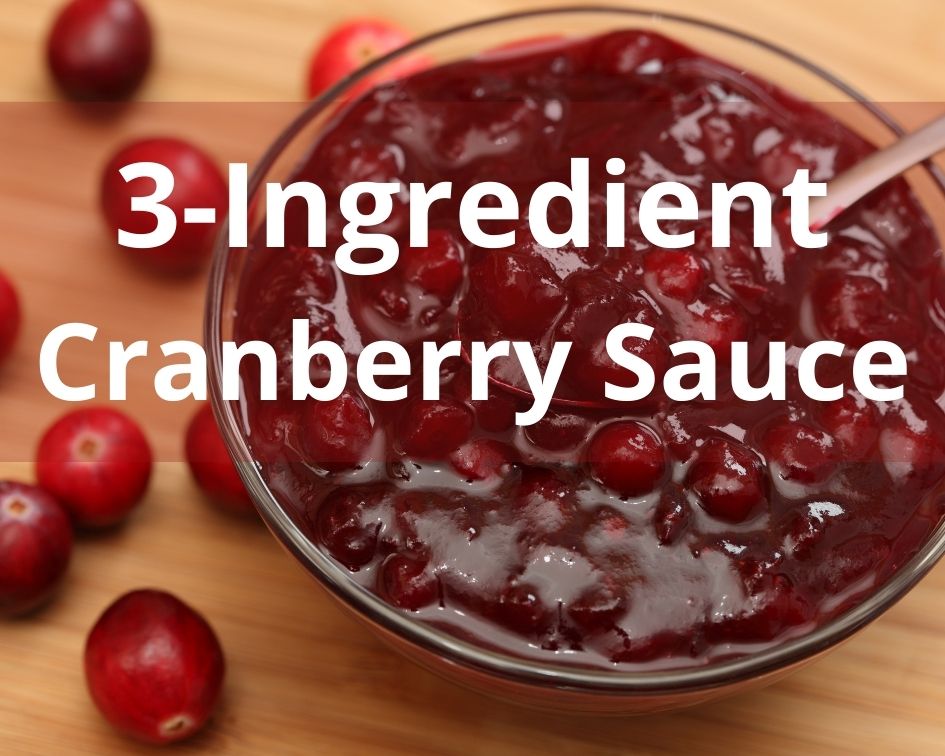
This 3-ingredient cranberry sauce is one of my favorites! I look forward to this recipe every year. If you’re accustomed to the sweetness of canned cranberry sauce, a word of caution is that this sauce is pretty tart. This sauce tastes even better the second day, so make it ahead of time and store it in the fridge. *The orange juice in this recipe is high histamine, so if you are in a major flare, this might not be the best recipe for you…or have just a small amount. And be sure to eat lots of other low histamine or anti-inflammatory dishes along with it.
Prep time: 10 minutes
Total time: 40 minutes
INGREDIENTS
- 10 oz fresh cranberries
- 1 tbsp orange zest (organic since using the peel)
- ⅔ cup orange juice
- ¼ cup pure maple syrup or raw honey
INSTRUCTIONS
- Add all ingredients to a sauce pan on medium heat. Allow to simmer for about 15 minutes until all the cranberries have popped and the sauce begins to thicken. Use a slotted spoon to stir occasionally and smash the cranberries as they soften.
- Cool before serving. Sauce will thicken more as it cools. Store leftovers in the fridge.
CLICK HERE TO LEARN MORE ABOUT THE HISTAMINE SOLUTION ACADEMY
Cranberry Waldorf Salad
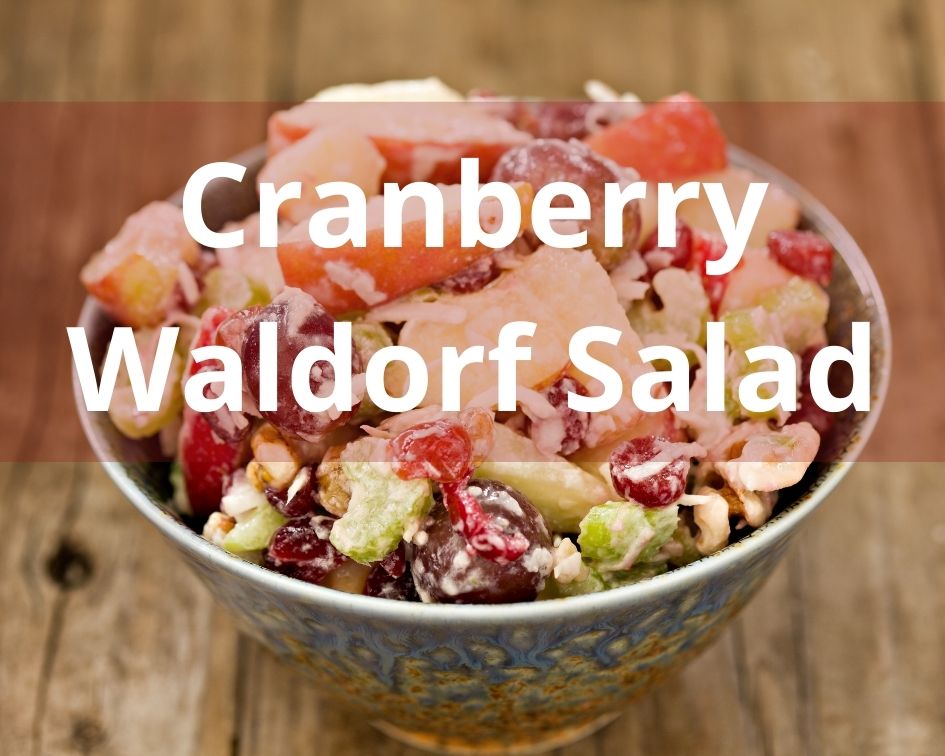
I despised Waldorf salad growing up with all the sickening sweet, squishy marshmallows. So I was hesitant to try this recipe, but heaven exploded in my mouth when I did. Note that dried fruit is high histamine, and this recipe contains dried apricots. However, it is paired with low histamine and anti-inflammatory ingredients, so should balance out nicely. Nevertheless, go easy on this one if you’re in a major flare!
*Recipe from Melissa Joulwan
Prep time: 20 minutes
Total time: 25 minutes
INGREDIENTS
- 1 bag fresh (whole) cranberries
- 16 dried apricots
- 1 lb. seedless grapes, cut in half
- 2 apples, cut into bite-sized pieces
- 1 can full-fat coconut milk for whipped cream
- 1/2 cup pecan halves, chopped
- 1 teaspoon vanilla extract
INSTRUCTIONS
This salad works best if you do the prep, then let it sit overnight. Put your mixing bowl and beater in the freezer, and place the can of coconut milk in the refrigerator. Wash the cranberries. Place them in the food processor with the dried apricots and grind them until the mixture has the consistency of relish. In a large bowl, toss the cranberries with the cut apples and grapes. Cover tightly and place in the refrigerator so they can get to know each other. Forget about them until the next day.
On Thanksgiving morning when you’re ready to assemble the salad, prepare a batch of coconut whipped cream using the recipe below. When the cream is done, add the nuts to the fruit mixture, and gently fold in the whipped cream. Garnish with whole cranberries and nuts.
Roasted Garlic Green Beans
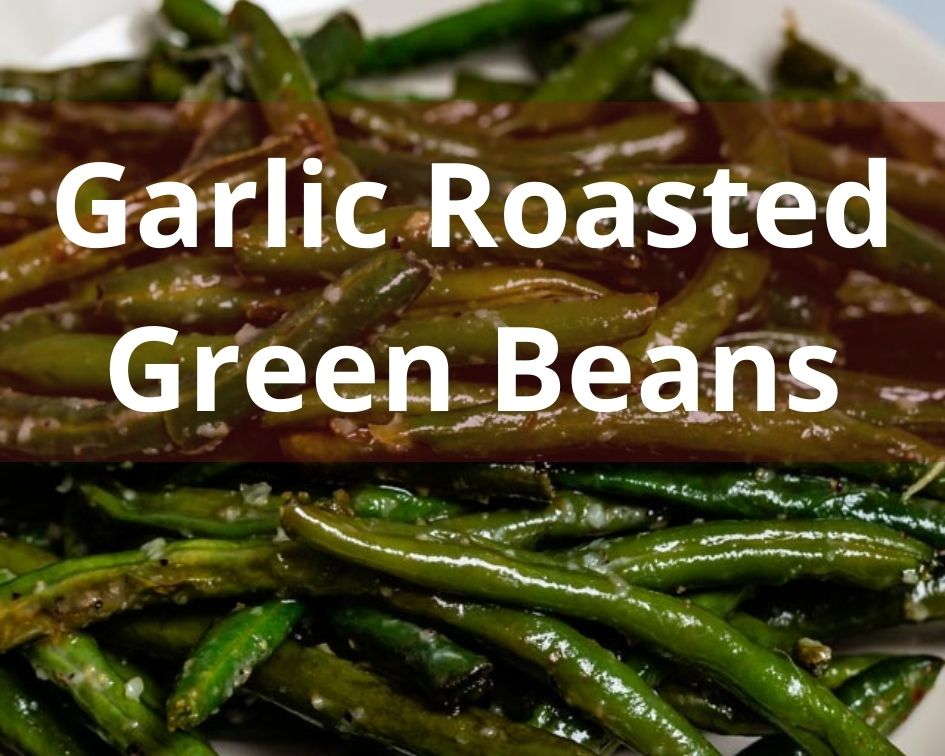
This super easy side dish is a delicious accompaniment to any meal. In my opinion, roasting green beans is the only way to go because the texture of the green beans is perfect! Plus, this recipe contains garlic, which is a natural antihistamine, and has anti-inflammatory and antibacterial properties as well. The extra virgin olive oil used in this recipe is also anti-inflammatory.
Prep time: 10 minutes
Total time: 30 minutes
INGREDIENTS:
- 1 pound fresh green beans
- 1 tbsp extra virgin olive oil
- 4 cloves garlic, chopped
- Himalayan salt to taste
- Ground black pepper to taste
INSTRUCTIONS:
- Preheat oven to 400°.
- Wash the green beans, pat dry with a towel, and trim off the ends.
- Place green beans in a large bowl and coat well with the olive oil and garlic
- Cover a baking sheet with parchment paper and spread the green beans in a single layer on the sheet.
- Roast in the oven for 20-30 minutes, or until the beans are browned and soft when pierced with a fork.
Coconutty Mashed Sweet Potatoes
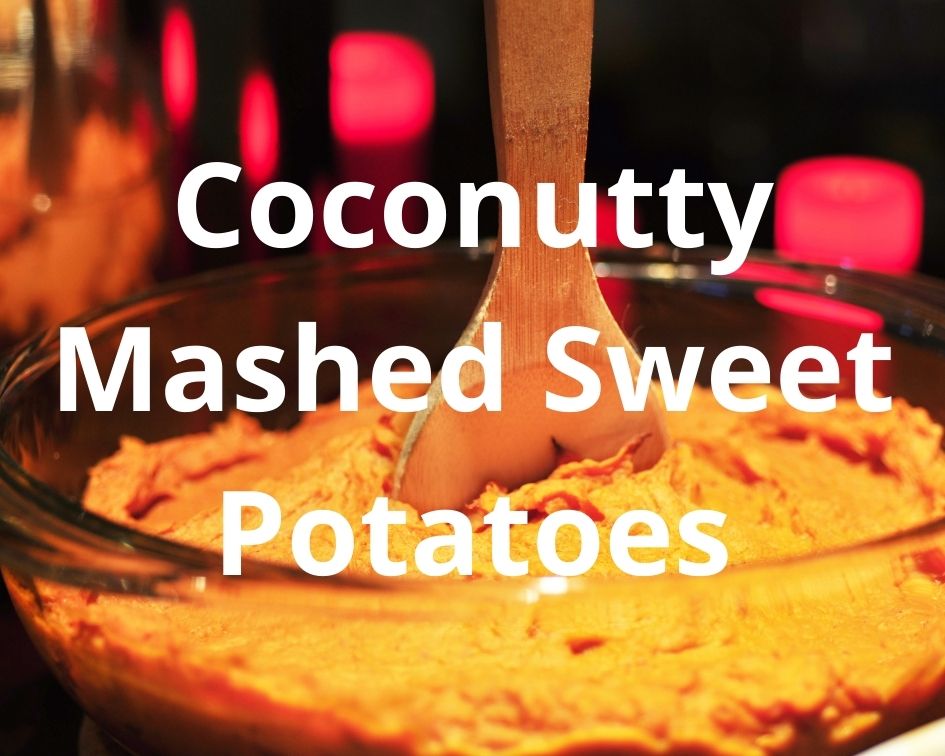
This is a naturally sweet dish that pairs two anti-inflammatory powerhouses, coconut and sweet potatoes, to balance out the higher histamine cinnamon (optional). It’s sure to satisfy all the tastebuds around the dinner table!
Prep time: 10 minutes
Total time: 40 minutes
INGREDIENTS:
- 2-3 large sweet potatoes, peeled & diced
- 3 tbsp ghee or coconut oil (heavy cream if you tolerate it)
- ½ – 1 tsp ground cinnamon
- ½ cup full-fat coconut milk
- Himalayan salt to taste
INSTRUCTIONS:
- Dice the potatoes into about 1” cubes and place into a large pot. Cover with water, season generously with Himalayan salt, and set over high heat until boiling.
- Lower heat to medium-high and boil for 15 – 20 minutes, stirring occasionally, until the potatoes are easily pierced with a knife. *You can also do this in an Instant Pot, setting the manual timer for 2-3 minutes.
- Once the potatoes are done, drain the water, return to the warm pot, but remove from heat.
- Add the ghee and slowly blend in the coconut milk while mashing the potatoes using a potato masher or hand mixer. Add liquid slowly to the consistency of your liking.
- Add in salt and cinnamon, mix well.
- Taste and adjust the seasonings to your liking.
CLICK HERE TO LEARN MORE ABOUT THE HISTAMINE SOLUTION ACADEMY
Paleo Apple Crisp
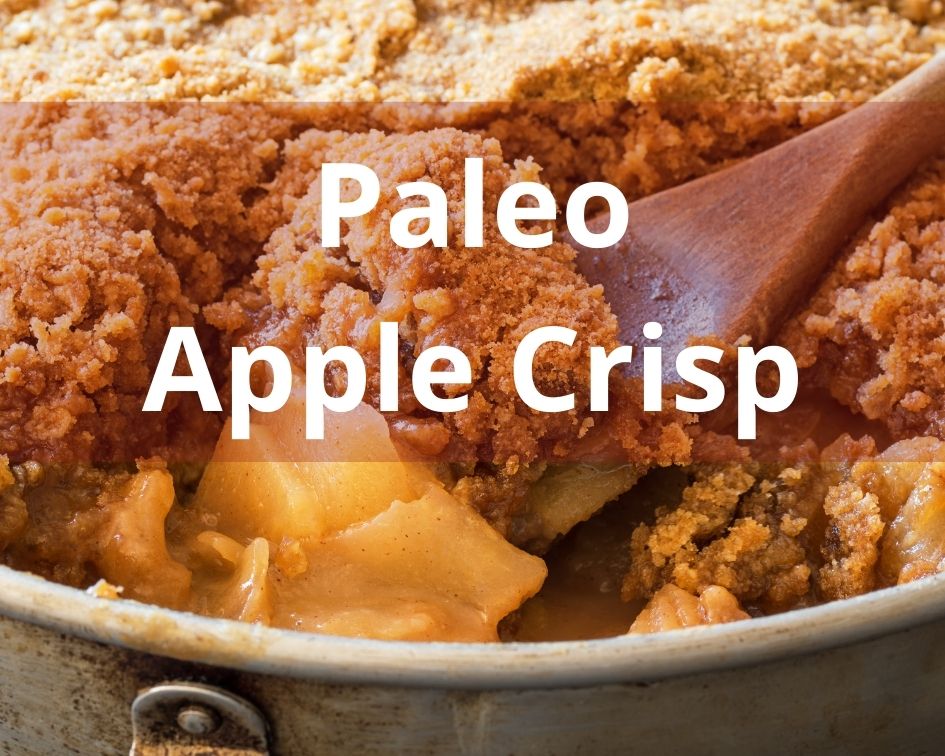
This paleo version of traditional apple crisp always has my family licking their plates clean. Served up with a dollop of coconut whip cream (see below), it’s the perfect substitute for the traditional version but without the inflammatory refined sugar and gluten. The anti-inflammatory/antihistamine nature of the apples and ginger, along with the anti-inflammatory nature of the coconut balances the high-histamine nature of the cinnamon.
*Inspired by a recipe from Paleo Running Momma
Prep Time: 20 minutes
Cook Time: 50 minutes
INGREDIENTS FOR FILLING:
- 6 medium apples, cored, peeled & thinly sliced. Granny Smith, Braeburn, Jonagold and Honeycrisp are all good varieties for baking.
- 1 tsp cinnamon
- ¼ tsp nutmeg
- ¼ tsp ginger
- 1 tbsp pure maple syrup (this could be left out if you want a more tart flavor)
INGREDIENTS FOR THE CRISP TOPPING:
- 6 tbsp organic unrefined coconut oil or ghee
- 1 cup raw pecans
- ¾ cup almond or tiger nut flour
- 2 tbsp pure maple syrup
- ⅔ unsweetened coconut flakes
- 1 tsp organic vanilla extract
- 2 tsp cinnamon
- ½ tsp nutmeg
- ¼ tsp ginger
- ¼ tsp allspice
- ⅛ tsp Himalayan salt
INSTRUCTIONS:
- Preheat oven to 350°.
- In a large bowl, mix together the apples with the spices and maple syrup for the filling. Add apple mixture to a 9-10” pie plate or square baking dish.
- For the crisp topping, add all the ingredients to a food processor and pulse until the pecans are finely ground and a thick, crumbly topping is formed.
- Use your hands to spread the topping mixture as evenly as possible over the apple mixture in the baking dish.
- Bake in the preheated oven for 45 minutes or until the apples are bubbling and the topping is brown and crisp. I like to poke the apples with a fork to be sure they are soft.
- Allow to cool for 30 minutes and serve with coconut whip cream.
Coconut Whipped Cream
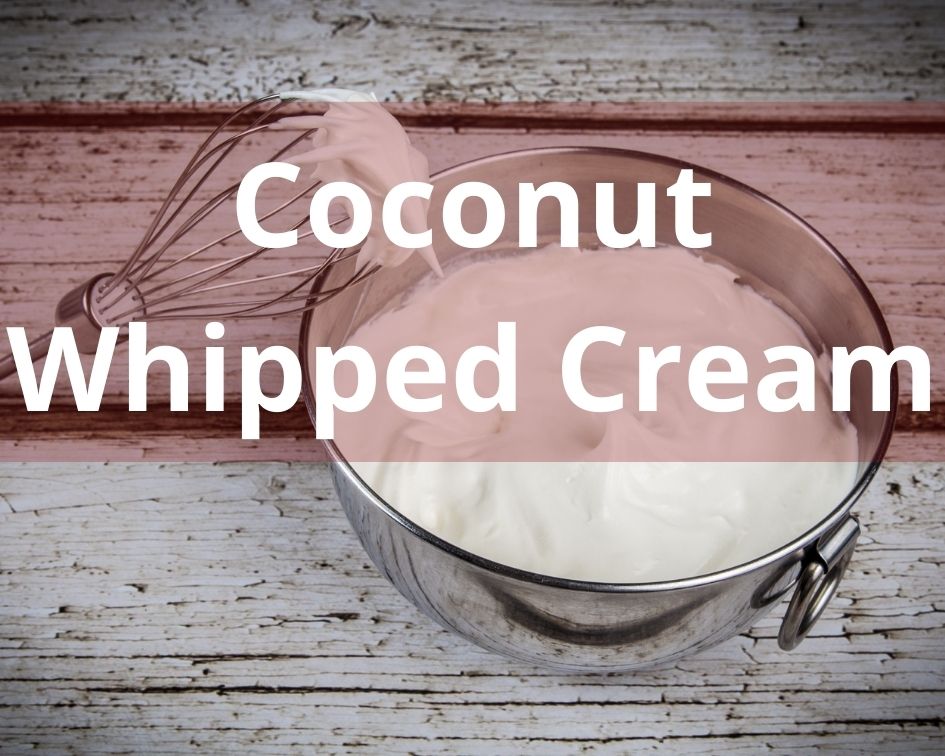
This anti-inflammatory, slightly sweet whip cream is the perfect accompaniment to the apple crisp (or any Thanksgiving dessert) recipe above. It’s super important that you plan ahead for this one by refrigerating your can of coconut milk or cream for 18-24 hours, otherwise your whip cream will be a runny flop.
Important to note is that not all coconut brands are created equally. Some are runnier or grainier than others. I’ve had good luck with the Native Forest brand and Sprouts or Trader Joe’s coconut cream. You want to use canned coconut milk or cream for this recipe, NOT the liquid type that comes in the carton in the refrigerated section of the store.
INGREDIENTS:
- 1 14-ounce can FULL FAT coconut milk or coconut cream (I prefer to use coconut cream because the entire can is the thick, cream portion of a regular can of coconut milk.) Refrigerate overnight before making.
- 1 tsp vanilla extract
*Note: I have seen different versions of this recipe, many of which add various sweeteners, but I think the whip cream is plenty sweet on its own, especially since it will accompany the already sweet apple crisp. If you’re going to sweeten it, I encourage you to use either maple syrup or monk fruit sweetener, as refined sugar is inflammatory and high histamine.
Pro tip: You may want to refrigerate a couple cans of coconut milk or cream, instead of just one, because the consistency of the milk/cream varies from can to can, even with the same brand. Sometimes a can will be a complete flop because the cream doesn’t harden. Always have a backup, just in case!
INSTRUCTIONS:
- Refrigerate your can of coconut milk or coconut cream overnight. Do NOT skip this step, or your whip cream is sure to be a sloppy flop.
- Open the cold can of coconut milk or cream and scoop out the hardened cream from the top of the can (reserve the liquid milk to use in a smoothie). Add the hardened cream to a mixing bowl and add the vanilla.
- Use a hand mixer or stand mixer to beat on medium high for about 2 minutes, or until fluffy peaks form.
- Refrigerate and serve with apple crisp. It makes a great, healthy dip for fruit as well!
